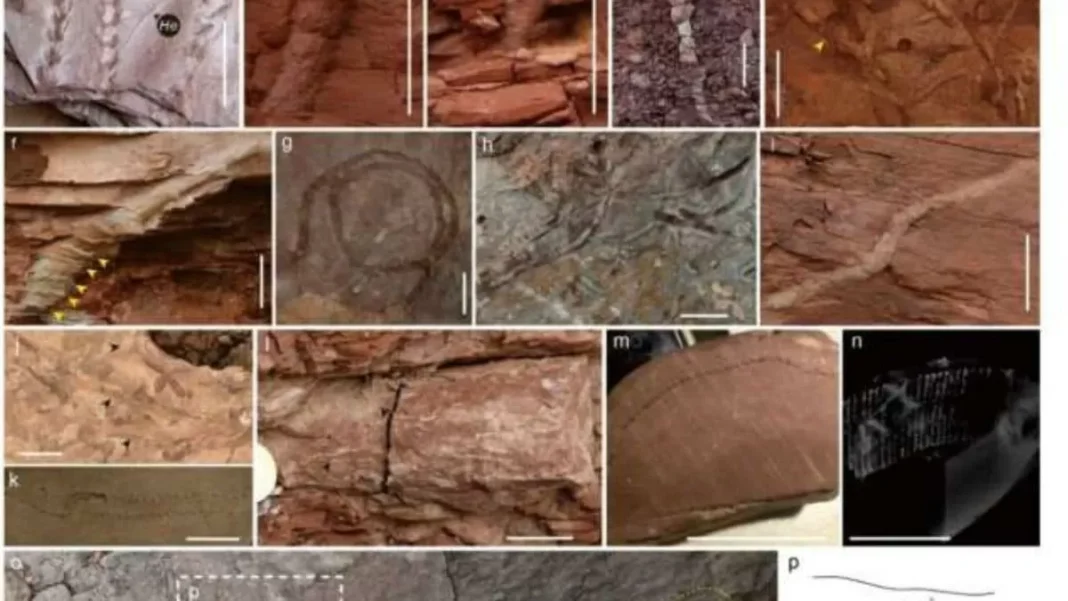Fossil Findings from the Heshanggou Formation in North China Reveal Surprising Recovery of Land Ecosystems After the End-Permian Extinction
The end-Permian extinction, also known as the Great Dying, is considered to be the most catastrophic event in the history of life on Earth. It occurred approximately 252 million years ago and wiped out over 90% of all species on the planet. The cause of this mass extinction is still debated, but it is believed to have been a combination of volcanic eruptions, climate change, and ocean acidification.
For a long time, it was thought that the recovery of land ecosystems after the end-Permian extinction was a slow and gradual process. However, new research from the Heshanggou Formation in North China has challenged this belief. Fossil findings from this region indicate that land ecosystems recovered much faster than previously estimated.
The Heshanggou Formation is a geological formation in the Shanxi Province of China. It is known for its rich fossil record, particularly of plants and animals from the Permian and Triassic periods. A team of researchers from China, the United States, and the United Kingdom conducted a study on the fossilized remains found in this formation, and their findings have been published in the journal Nature Communications.
The researchers focused on the riparian zones, which are areas along the banks of rivers or streams. These zones are known to be highly sensitive to environmental changes and are often the first to show signs of recovery after a disturbance. The team found evidence of burrowing activity and plant regrowth in these riparian zones, indicating that ecological recovery was underway.
What is most surprising is the timeline of this recovery. Previous estimates suggested that the land ecosystems took at least 10 million years to recover after the end-Permian extinction. However, the new findings from the Heshanggou Formation suggest that riparian zones may have stabilized within a much shorter timeframe of just 1-2 million years.
This discovery has significant implications for our understanding of the recovery process after mass extinctions. It challenges the idea that land ecosystems were uninhabitable for a prolonged period and suggests that they were able to bounce back much faster than previously thought.
The researchers also found evidence of a diverse range of plant and animal species in the riparian zones, indicating a rapid recolonization of the area. This is a clear indication that the land ecosystems were able to support a thriving community of organisms in a relatively short period.
The presence of burrowing activity is particularly noteworthy as it suggests that the soil was stable enough to support these activities. This is a crucial factor in the recovery of land ecosystems as it allows for the development of a healthy soil ecosystem, which is essential for the growth of plants.
The plant regrowth observed in the riparian zones also provides valuable insights into the recovery process. The researchers found evidence of a diverse range of plants, including ferns, conifers, and seed plants. This suggests that the land ecosystems were able to support a variety of plant life, which is essential for the overall health and stability of the ecosystem.
The findings from the Heshanggou Formation also shed light on the role of riparian zones in the recovery of land ecosystems. These zones are often overlooked in studies of mass extinctions, but the new research highlights their importance in the recovery process. It also emphasizes the need for further research in these areas to gain a better understanding of their role in the recovery of land ecosystems.
The discovery of a faster recovery of land ecosystems after the end-Permian extinction is a ray of hope in the face of the current climate crisis. It shows that even after a catastrophic event, the Earth has the ability to bounce back and support a diverse range of life. However, it also serves as a reminder of the fragility of our planet and the need to take urgent action to protect it.
In conclusion, the fossil findings from the Heshanggou Formation in North China have provided valuable insights into the recovery of land ecosystems after the end-Permian extinction. They challenge previous estimates and suggest that the recovery process was much faster than expected. This discovery not only adds to our understanding of the Earth’s history but also highlights the resilience of our planet. It is a testament to the power of nature to heal and recover, and it is up to us to ensure that we do not cause any more harm to our fragile planet.



